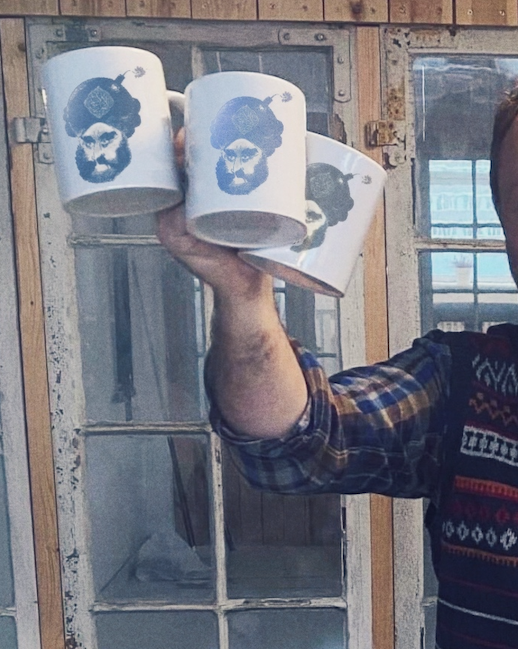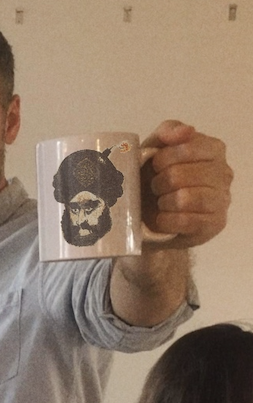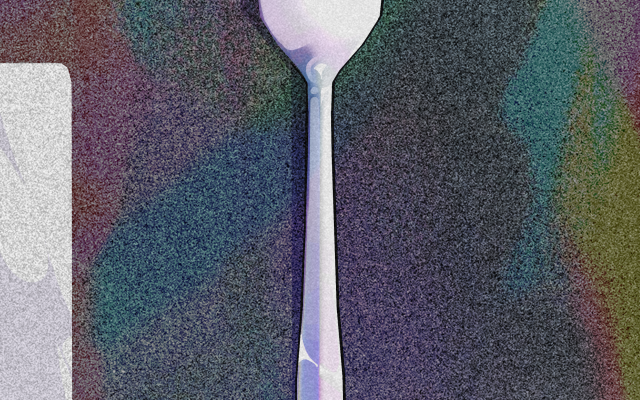A Danish artist, Uwe Max Jensen, had his house ransacked by the local police on the morning of February 2nd. The officers confiscated his and his wife’s telephones and computers as well as his son’s game console. Then, they went to Jensen daughter’s apartment. However, she was away travelling so they took nothing from there.
Uwe Max Jensen caught the attention of police after a set of memes appeared on the internet. According to the officers, they were designed by Jensen. The memes are considered a threat to the editor of a small, internet radio station called Den Uafhængige (“The Independent”).
The incident is a part of an ongoing and even more bitter debate in Denmark, concerning the so- called “Muhammad cartoons” printed by the newspaper Jyllands-Posten in 2006. The cartoons were used by a group of OIC countries as an excuse to launch a massive diplomatic campaign against Denmark. A Swedish artist, Lars Vilks, commented on this issue with his drawing which depicted Muhammad as a roundabout dog and was part of the Political Art exhibition at Ujazdowski Castle Centre for Contemporary Art from August 2021 to January 2022.
As of today, no newspapers in Denmark are going to print the cartoons for the fear of attacks and the art world itself also stays away from this topic. After a French teacher named Samuel Paty was killed in October 2020, the problem arose in the context of educational system. Paty held classes in France, with cartoons from Charlie Hebdo magazine that portrayed Muhammad in a caricatural way, being a part of the curriculum.
The terrorist behind the attack claimed that it had been a punishment for blasphemy. Blasphemy is not considered a libel in neither France nor Denmark while Islamists don’t use this word at all. They call it “something the unbelievers are doing” with a slightly different meaning, since it covers basically everything connected to Western lifestyle , not only desacralisation of religious symbols. Still, the narrative stating that cartoons can unleash violence is strongly established. People seem to focus less on the fact that most victims of terrorist attacks are not linked in any way to the cartoons in question.
Since the violent death of Samuel Paty, the debate has been raging; shall teachers show the cartoons and expose themselves as well as their pupils to possible extreme danger, or should they give in to the terrorists instead– handing them an important propaganda victory?
This was the topic for the debate that The Independent organised. During the talk, listeners encouraged the host to show the cartoons, which he did. This caused distress at the venue and the pictures were edited out of the programme later on. The editor in chief, Asger Juhl, explained this decision saying “he did not want to die”.
Uwe Max Jensen commented on this by posting pictures showing Mr Juhl holding different objects – a coffee cup, a poster etc. – incorporating the most infamous of the cartoons, Kurt Westergaard’s Bomb in the turban image. Westergaard’s motivation was to show that some terrorists use religion to hide their political crimes. But, the public opinion claims that the drawing is insulting to every Muslim.

Detail from manipulated photos

Detail from manipulated photos
The radio station got in touch with Mr Jensen and tried to persuade him to remove the memes from the internet. The reason was that they felt threatened by the pictures. What could happen if someone were to believe they were authentic?
How exactly this situation escalated into an intrusion by police officers in the artist’s home is unclear. The task has been given priority over tens of thousands unfinished cases and the officers attributed it to the “dangerous crimes against individuals” category. It might be that even just the idea that someone has been in connection with the drawings is enough to make the person a target for terrorism. If this is the case, then the threat against free speech is elevated to a new level. Therefore, anyone can pose a deadly threat to another person simply by altering a picture of the person in question. It can expose the photographed to danger and therefore, make the alleged sender a subject of police investigation.
Uwe Max Jensen has not had any official charges pressed against him yet. The case might be the first of its kind in the world.


